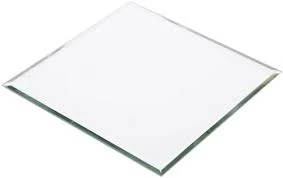

Understanding the Types of Patterned Glass
Patterned glass, often referred to as patterned or textured glass, has been a popular choice in architecture and design for many generations. Its unique ability to diffuse light while ensuring privacy makes it an excellent option for various applications, from residential to commercial spaces. The creation of patterned glass involves methods that imprint or etch designs onto the glass surface, yielding visually appealing results with functional benefits. This article will explore various types of patterned glass, their manufacturing processes, and their specific applications.
Types of Patterned Glass
1. Frosted Glass Frosted glass is one of the most common types of patterned glass. It is created through sandblasting or acid etching the surface, resulting in a translucent finish that obscures visibility while allowing light to pass through. This type of glass is often used in bathroom windows, office partitions, and shower doors, where privacy is essential. Frosted glass can also be customized with various patterns and designs, enhancing its aesthetic appeal.
2. Obscured Glass Obscured glass features irregular textures that significantly distort visibility. It is manufactured by rolling hot glass to create patterns or by applying a special coating. This type of glass is frequently utilized in exterior windows, obscuring views while still permitting natural light to brighten interiors. It is particularly popular in residential settings where homeowners seek to maintain privacy from passersby.
3. Reeded Glass Reeded glass is characterized by vertical grooves or ribs that run along its surface. This adds a sophisticated texture while allowing filtered light to enter. Commonly used in doors, cabinets, and partitions, reeded glass offers a unique balance between privacy and light penetration. The vertical lines also add an element of elegance and can complement various design styles, from contemporary to classic.
4. Stippled Glass Stippled glass features a randomly defined pattern created through a series of small, rounded elevations. This texturing process allows light to scatter in different directions, resulting in a soft, diffused glow. Stippled glass is often found in decorative elements and privacy screens, providing a decorative flair without compromising functionality or light.

5. Patterned Geometric Glass This glass type uses geometric patterns, such as squares or diamonds, to create visual interest. It is often used in decorative applications, including skylights, doors, and windows, where design is paramount. The geometric patterns can enhance the overall aesthetic of a space while still maintaining a degree of privacy.
6. Laminated Glass with Patterns Laminated glass consists of two or more layers of glass bonded together with an interlayer, which can also feature patterns or textures. This type helps improve safety and sound insulation while incorporating design elements. Laminated patterned glass is often used in facades and as interior partitions in commercial buildings, striking a balance between aesthetics and practicality.
Applications of Patterned Glass
Patterned glass is versatile, suitable for various settings. In residential homes, it can be used for bathroom windows and decorative elements, adding privacy without compromising light. In commercial buildings, it can enhance office partitions and storefronts, creating visual separation without closing off the space. Furthermore, patterned glass is also prevalent in art installations, helping artists convey complex themes through light and texture.
Conclusion
In summary, patterned glass offers an impressive array of options that serve both aesthetic and functional purposes. Its various types, including frosted, obscured, reeded, stippled, patterned geometric, and laminated glass, provide unique ways to enhance light and privacy in any environment. As architects and designers continue to seek innovative solutions for modern spaces, patterned glass will undoubtedly remain a valuable material in the design toolbox. Whether used in homes, offices, or public installations, its beauty and versatility will continue to inspire.